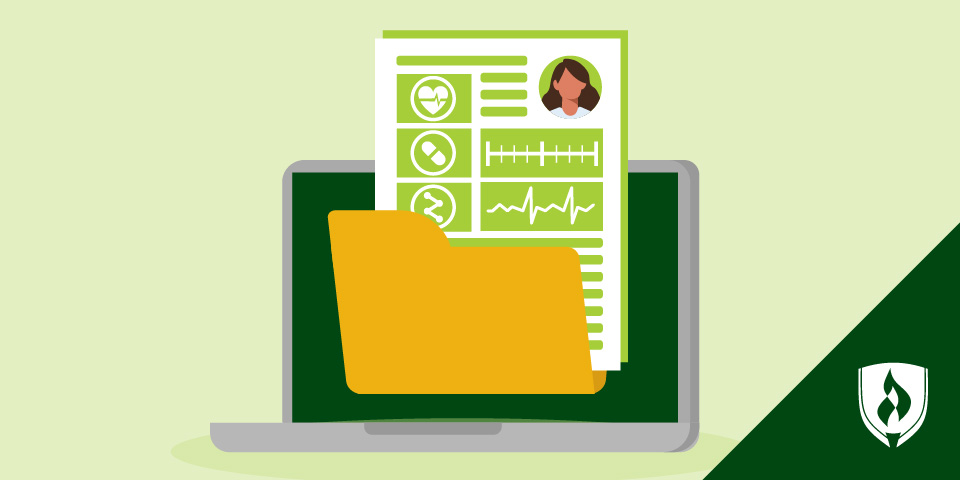
If you’ve been referred to a specialty clinic as a patient, chances are you’ve heard about medical records. While you know that your medical records are a thing that exist somewhere, you might be wondering what exactly these records typically include—and what they’re used for.
A medical record is documentation about an individual’s physical and mental healthcare. It typically holds information about past and recent diagnoses, treatments, medications, allergies and family health history. For physicians and other healthcare workers, this data gives them a snapshot of the person under their care to inform any decisions or changes moving forward.
Because of the private nature of its content, medical records are both a legal and medical matter, making access to these files highly regulated and not always open to inquiring minds. If you are interested in the intersection between medical and legal documentation, read on for an overview of these critical records.
What information is found in a medical record?
It might surprise you to find out that medical records are not necessarily uniform. While obviously the health information included will vary from patient to patient, there are also differences found in medical records that can be attributed to the facility that created the document. Some may be more detailed than others, some may have additional provider-specific information and so on. That being said, there are still some categories of information you can typically expect to find in a medical record.
1. Basic patient identification, demographic and financial information
This section typically includes your name, address, phone number, sex, age, birthday, race/ethnicity and emergency contact information. Financial information in a medical record include things regarding insurance and responsibility for payment. This might include the provider’s name and policy number. In some cases, this section may also include your employer’s phone number, especially in situations where the employer is the one providing insurance.
2. Consent and authorization forms
In short, this section consists of forms that regard consent to treatment and consent for sharing medical information with specified parties. Consent forms for treatment often include information about the diagnosis, risks and benefits of the treatment suggested, and what recovery will look like. All of these factors are important for patients to understand up front so they can make an informed decision about their care.
Sometimes, other parties will request your medical information. This could be an employer who’s verifying your immunizations, for example. The release itself includes verification of your identity and what information is allowed to be released—and to whom it is being disclosed.
3. Treatment history
This is exactly what it sounds like—anything that’s been part of your treatment in the past will be included here. Some things you might find on this portion of a medical record include history of illness, past surgeries, allergies and provider notes on overall health habits like exercise and diet. Other things that might be included here are vitals, lab results and any other test results.
4. Immunization records
While your treatment history records may cover this, often, your medical record may have a dedicated section noting your immunization status as well as the dates they were administered. This is important foundational knowledge for healthcare providers to consider when making diagnoses and treatment plans.
5. Medications
Another obviously helpful set of information for providers to track is the medications you are currently taking and previous medication history. Certain treatment plans and medications may not mix well with your current medications, so having this information can help providers minimize potentially risky drug interactions and ideally help keep unpleasant side effects at bay.
This portion includes both prescription and non-prescription medications, their dosages and dosage scheduling.
6. Outpatient visit documentation and notes
This part is comprised of any up-to-date information from a clinic visit. This includes nursing notes, general progress updates and any revised physician orders and prescriptions.
Privacy for medical records
Now that you know what data is typically found in a medical record, you might be wondering who all has access to it—and what it takes to gain that access. As mentioned above, for your medical records to be released to people outside of your care providers, you need to sign a form authorizing the release of that information.
In this way, medical records are not available to the general public. There are federal laws that prohibit this information from being shared, called the Health Information Portability and Accountability Act (HIPAA). Violating the privacy rule means offenders can be fined up to $50,000 and up to one year in prison for disclosure of identifiable information—and these fines can increase depending on the specific circumstances of the unlawful disclosure.1
Within the provider community, medical records may need to be shared. There are various secure platforms that allow medical records to be shared across providers. This helps eliminate miscommunications and unnecessary duplicative testing from your new provider.
What are medical records used for?
The obvious application of these records is for helping healthcare providers document, track and share critical patient information. But that’s not the only way these records can be used in a professional setting.
For one, medical records can be used as evidence in both civil and criminal legal proceedings. These records are also used by insurance providers to support payment decisions, detect waste and identify fraudulent billing practices. Additionally, with the continued widespread adoption of electronic medical records systems, this data can be anonymized and used to support research and quality improvement initiatives that can help cut costs and improve the overall quality of care.
You may not know it, but there’s an entire branch of healthcare operations focused on working with health information. If you’d like to learn more about some of the roles associated with this field, check out our article “ Health Information Career Paths: Exploring Your Potential Options.”
Related Articles:
- EMR vs. EHR: Understanding the Differences in Digital Records
- How Long Are Medical Records Kept? And 11 Other Health History FAQs
1 “What Are the Penalties for Violating HIPAA?” American Dental Association, [accessed December 2022], https://www.ada.org/resources/practice/legal-and-regulatory/hipaa/penalties-for-violating-hipaa.




